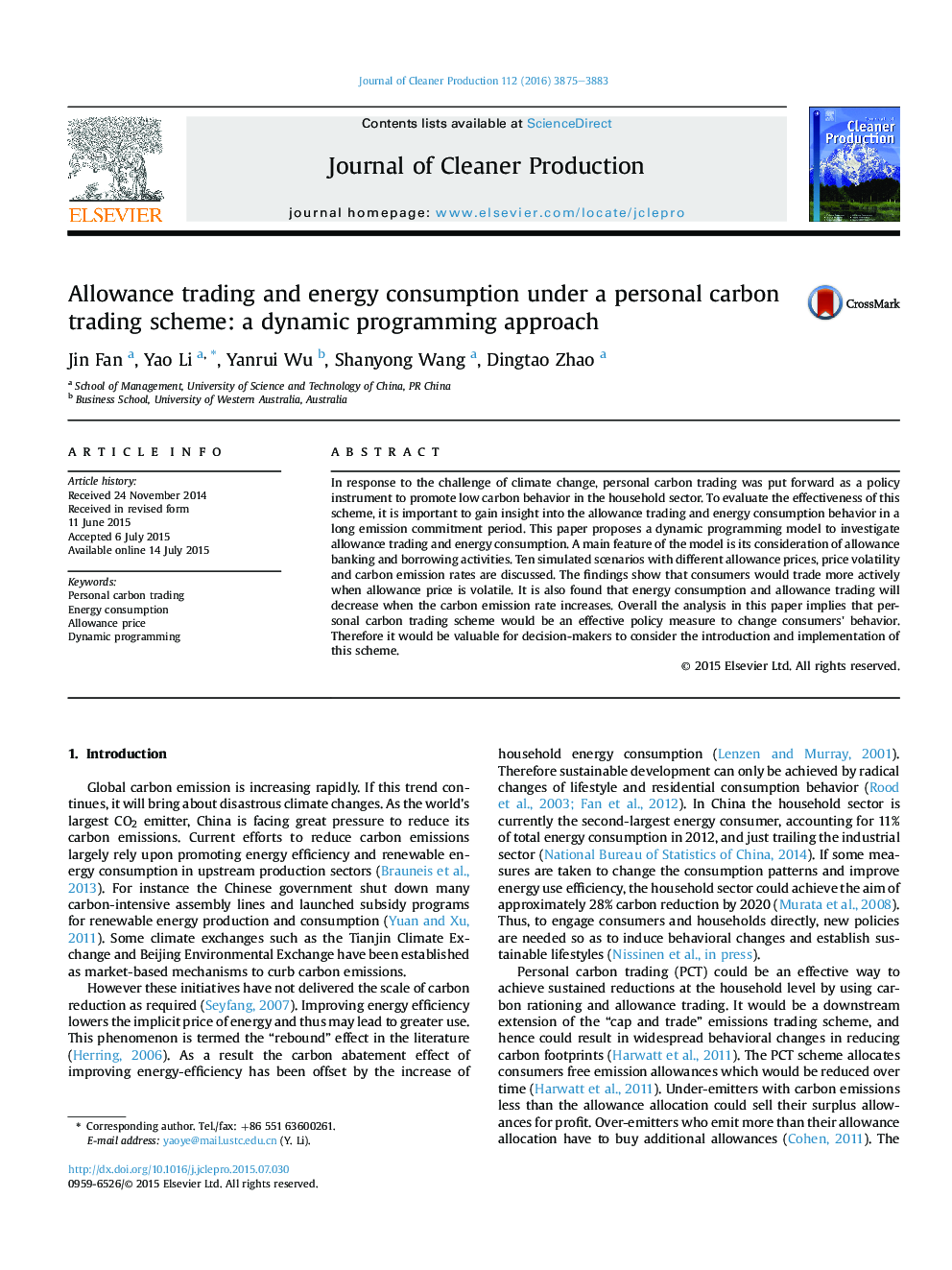| Article ID | Journal | Published Year | Pages | File Type |
|---|---|---|---|---|
| 10687932 | Journal of Cleaner Production | 2016 | 9 Pages |
Abstract
In response to the challenge of climate change, personal carbon trading was put forward as a policy instrument to promote low carbon behavior in the household sector. To evaluate the effectiveness of this scheme, it is important to gain insight into the allowance trading and energy consumption behavior in a long emission commitment period. This paper proposes a dynamic programming model to investigate allowance trading and energy consumption. A main feature of the model is its consideration of allowance banking and borrowing activities. Ten simulated scenarios with different allowance prices, price volatility and carbon emission rates are discussed. The findings show that consumers would trade more actively when allowance price is volatile. It is also found that energy consumption and allowance trading will decrease when the carbon emission rate increases. Overall the analysis in this paper implies that personal carbon trading scheme would be an effective policy measure to change consumers' behavior. Therefore it would be valuable for decision-makers to consider the introduction and implementation of this scheme.
Related Topics
Physical Sciences and Engineering
Energy
Renewable Energy, Sustainability and the Environment
Authors
Jin Fan, Yao Li, Yanrui Wu, Shanyong Wang, Dingtao Zhao,
